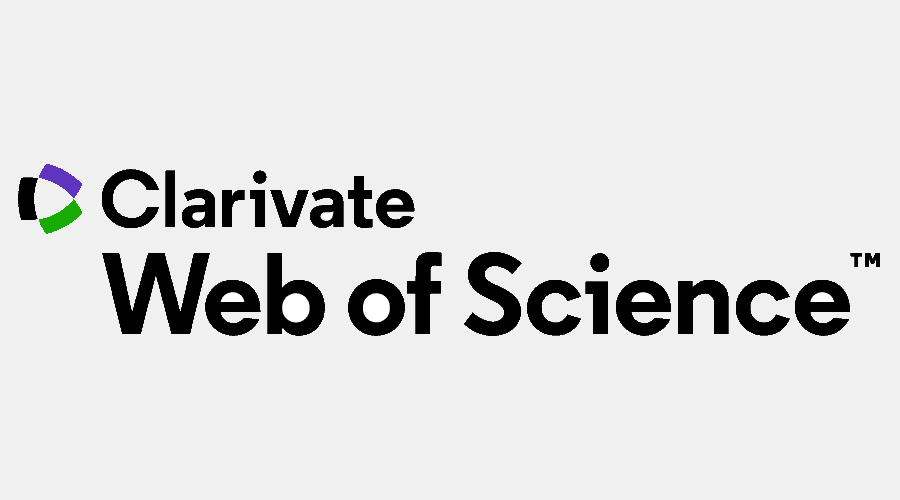Quantification of nitrate fluxes to groundwater and rivers from different land use types
Abstract
Nitrate enters aquatic systems from anthropogenic and natural sources affecting drinking water supply and surface water eutrophication. Conventional hydro-chemical measurements have been used together with the geographic information system (GIS) and stable isotopes techniques to track nitrate origin, sources distribution and quantify their fluxes from various land use types to ground and surface waters in East Ukraine. Average fluxes of nitrate in groundwater are estimated at 356 kg year-1 km-2 from settlements (mostly rural), 214 kg year-1 km-2 – from agricultural lands and 73 kg year-1 km-2 – from forested areas. According to the mass balance estimation, nitrogen input (150 kg year-1 km-2) occurs mainly in the upper part of the Seversky Donets River basin and is attributed to the discharge of untreated municipal wastewater to rivers as well as groundwater contamination by leaking septic tanks and pit latrines from residential areas.
References
Bermudez-Couso, A., Fernandez-Calvino, D., Alvarez-Enjo, M.A., Simal-Gandara, J., Novoa- Munoz, J.C. and Arias-Estevez, M. 2013. Pollution of surface waters by metalaxyl and nitrate from non-point sources. Science of the Total Environment 461–462. 282–289. https://doi.org/10.1016/j.scitotenv.2013.05.023
Canter, L.W. 1997. Nitrates in Groundwater. New York, CRC Press Inc. ECO 2015. Ecological and Environmental Passport of the Kharkiv region, 2015. Kiev, Ministry of the Environmental Protection of Ukraine. (in Ukrainian).
GLC 2000. Global land cover (GLC) 2000 – Europe. European Environment Agency. URL: https://www.eea.europa.eu/data-and-maps/data/globalland-cover-2000-europe
Göndöcs, J., Breuer, H., Horváth, Á., Ács, F. and Rajkai, K. 2015. Numerical study of the eff ect of soil texture and land use distribution on the convective precipitation. Hungarian Geographical Bulletin 64. (1): 3–15. https://doi.org/10.15201/hungeobull.64.1.1
Katz, B.G., Chelette, A.R. and Pratt, T.R. 2004. Use of chemical and isotopic tracers to assess nitrate contamination and groundwater age, Woodville karst Plain, USA. Journal of Hydrology 289. 36–61. https://doi.org/10.1016/j.jhydrol.2003.11.001
Lockhart, K.M., King, A.M. and Harter, T. 2013. Identifying sources of groundwater nitrate contaminination in a large alluvial groundwater basin with highly diversified intensive agricultural production. Journal of Contaminant Hydrology 151. 140–154. https://doi.org/10.1016/j.jconhyd.2013.05.008
Makovníková, J., Kanianska, R. and Kizeková, M. 2017. The ecosystem services supplied by soil in relation to land use. Hungarian Geographical Bulletin 66. (1): 37–42. https://doi.org/10.15201/hungeobull.66.1.4
Maslov, B.S. 2009. Agricultural land improvement. Amelioration and reclamation. Vol. II. EOLSS Publications.
Matiatos, I. 2016. Nitrate source identification in groundwater of multiple land-use areas by combining isotopes and multivariate statistical analysis: A case study of Asopos basin (Central Greece). Scienceof The Total Environment 541. 802–814. https://doi.org/10.1016/j.scitotenv.2015.09.134
Ouyang, Y. 2012. Estimation of shallow groundwater discharge and nutrient load into a river. Ecological Engineering 38. (1): 101–104. https://doi.org/10.1016/j.ecoleng.2011.10.014
Pidlisnyuk, V., John Harrington, J.R., Melnyk, Y., Vystavna, Y. 2016. Fluctuations of annual precipitation and water resources quality in Ukraine. Chemistry and Chemical Technology 10. (4): 621–629. https://doi.org/10.23939/chcht10.04si.621
Rawat, K.S. and Singh, S.K. 2018. Water Quality Indices and GIS-based evaluation of a decadal groundwater quality. Geology, Ecology, and Landscapes 2. (4): 240–255. https://doi.org/10.1080/24749508.2018.1452462
Rivett, M.O., Buss, S.R., Morgan, P., Smith, J.W.N. and Bemment, C.D. 2008. Nitrate attenuation in groundwater: a review of biogeochemical controlling processes. Water Research 42. (16): 4215–4232. https://doi.org/10.1016/j.watres.2008.07.020
Skryzhevska, Y. and Karácsonyi, D. 2012. Rural population in Ukraine: assessing reality, looking for revitalization. Hungarian Geographical Bulletin 61. (1): 49–78.
Slomp, C.P. and Van Cappellen, P. 2004. Nutrient inputs to the coastal ocean through submarine groundwater discharge: controls and potential impact. Journal of Hydrology 295. (1–4): 64–86. https://doi.org/10.1016/j.jhydrol.2004.02.018
Teller, A., Mathy, P. and Jeffers, J.N.R. 2012. Responses of forest ecosystems to environmental changes. Springer Science and Business Media.
Vystavna, Y. and Diadin, D. 2015. Water scarcity and contamination in Eastern Ukraine. IAHS-AISH
Proceedings and Reports 366. 149–150. Vystavna, Y., Diadin, D., Grynenko, V., Yakovlev, V., Vergeles, Y., Huneau, F., Rossi, P., Hejzlar, J. and Knöller, K. 2017a. Determination of dominant sources of nitrate contamination in transboundary (Russia/Ukraine) catchment with heterogeneous land use. Environmental Monitoring and Assessment 189(10):509.
Vystavna, Y., Diadin, D., Yakovlev, V., Hejzlar, J., Vadillo, I., Huneau, F. and Lehmann, M.F. 2017b. Nitrate contamination in a shallow urban aquifer in East Ukraine: Evidence from hydrochemical, stable nitrate isotope, and land use analysis. Environmental Earth Sciences 76(13):463. https://doi.org/10.1007/s12665-017-6796-1
Vystavna, Y., Huneau, F., Schafer, J., Motelica-Heino, M., Blanc, G., Larrose, A., Vergeles, Y., Diadin, D. and Le Coustumer, P. 2012. Distribution of trace elements in waters and sediments of the Seversky Donets transboundary watershed (Kharkiv region, Eastern Ukraine). Applied Geochemistry 27. (10): 2077–2087. https://doi.org/10.1016/j.apgeochem.2012.05.006
Vystavna, Y., Yakovlev, V., Diadin, D., Vergeles, Y. and Stolberg F. 2015. Hydrochemical characteristics and water quality assessment of surface and ground waters in the transboundary (Russia/ Ukraine) Seversky Donets basin. Environmental Earth Sciences 74. (1): 585–596. https://doi.org/10.1007/s12665-015-4060-0
WHO 2008. Guidelines for drinking water quality. 3rd edition. World Health Organization. Geneva, WHO Press.
WHO 2011. Nitrate and nitrite in drinking water. Background document for development of WHO guidelines for drinking water quality. World Health Organization. Geneva, WHO Press.
Yakovlev, V., Vystavna, Y., Diadin, D. and Vergeles, Y. 2015. Nitrates in springs and rivers of East Ukraine: Distribution, contamination and fluxes. Applied Geochemistry 53. 71–78. https://doi.org/10.1016/j.apgeochem.2014.12.009
Copyright (c) 2018 Dmytro Diadin, Yuliya Vystavna, Yuri Vergeles

This work is licensed under a Creative Commons Attribution-NonCommercial-NoDerivatives 4.0 International License.





